Pork Belly or Bacon: Understanding the Real Divide
Pork belly has become increasingly popular in high-end restaurants across the country, offering a rich and indulgent flavor profile that meat enthusiasts adore.
This fatty cut comes directly from the underside of the pig, prized for its layers of fat and meat that create a delicious contrast when cooked properly.
Bacon, its more familiar cousin, undergoes curing and smoking processes that transform the original pork belly into something distinctly different.
The two ingredients serve different purposes in cooking despite their shared origin - one being a raw ingredient while the other arrives ready-processed.
Home cooks often feel intimidated by pork belly preparation, yet its versatility makes it worth mastering alongside traditional bacon recipes.
What exactly makes these two pork products so different yet equally beloved in kitchens worldwide? Read on as we slice through the facts.
A Deep Dive into Pork Belly
Pork belly is a flavorful, fatty, and tender cut of pork taken from the underside or belly of the pig. This prized meat is famous for its rich, succulent taste and soft texture, thanks to the perfect layers of fat and meat running through it.
Pork belly is the very same cut used to make bacon, but it’s also popular in its uncured, unsmoked form across global cuisines.This versatile cut has gained worldwide popularity, featured prominently in Chinese, Korean, Filipino, and American dishes, among others. It's a main ingredient in dishes like crispy pork belly, braised pork belly, samgyeopsal (Korean BBQ pork belly), Chinese char siu, and Italian porchetta.
Temperature and timing play crucial roles when preparing pork belly, as overcooking can strip away all the fat and moisture, resulting in dry, tough meat that loses its signature tenderness.
Exploring Bacon
Bacon, with roots dating back to ancient China and Rome, has evolved into many varieties like American streaky, Italian pancetta, and Canadian bacon, each offering unique flavors shaped by regional curing and smoking methods.
Cooking techniques vary, but oven-baking at 400°F often yields the best crispness, while bacon’s versatility spans from breakfast staples to innovative uses in salads and desserts.
Bacon fat melts when heated and solidifies as lard when cooled, providing a flavorful base for cooking. Due to health risks linked to blood vessels and heart, bacon should be enjoyed in moderation despite its rich taste.
Types Of Bacon
Bacon tends to have lots of fat, but different places around the world make it in their own special ways. By knowing a few main types, you can become more knowledgeable about this tasty meat.
American Bacon
Made from pork belly (side bacon), high in fat, smoked, and cooked crispy with a smoky flavor, common in American dishes.
English Bacon
Cut from the lean loin, unsmoked, meatier and less fatty than American bacon, served in traditional British breakfasts as “rasher.”
Canadian Bacon
Similar to English bacon, lean back meat often unsmoked, sliced oval, meatier texture, sometimes confused with ham.
Irish Bacon
Lean and unsmoked like Canadian and English bacon, cut into circular slices, typically served with eggs or rice, less crispy than American bacon.
Jowl Bacon
From the pig’s cheek, cured and smoked like American bacon, popular in Southern US cuisine, known as “hog jowl.”
Pancetta
Italian pork belly bacon, often eaten raw or in dishes like Carbonara, adds a strong, punchy flavor.
Slab Bacon
Whole pork belly kept intact, cut into thick slices or cubes, can be smoked, cured, or aged for varied flavors.
Lardon
French bacon cut into small cubes, usually unsmoked, used to enhance soups and stews with rich flavor.
Pork Belly vs Bacon: What Are Their Differences?
Knowing the distinctions between pork belly and bacon is essential for any cooking lover. They make each option suitable for different meals and cooking preferences, giving you flexibility in your kitchen adventures.
Check the table here to explore their differences.
| Aspect | Pork Belly | Bacon |
| Cut Thickness | Usually sold as a whole slab, thick | Sliced thin for quick fat rendering and crispiness |
| Curing | Raw, uncured meat | Cured (dry or wet) and often smoked; longer preparation time |
| Flavor | Bland raw, needs marination and cooking | Salty, smoky (for American bacon), rich umami flavor |
| Source | Only from the pig’s underside (belly) | Various pig parts (belly, loin, cheek, etc.) |
| Texture | Soft and tender when cooked slowly | Crispy when fried; fat rendered out |
| Cooking Uses | Versatile—braised, roasted, fried, slow-cooked | Mainly fried or baked; used as a side or flavor enhancer |
| Ease of Cooking | Requires skill to balance crisp skin and tenderness | Easy and quick to cook; beginner-friendly |
| Health | Natural cut, high in fat and protein, vitamins | Contains additives, salt; high cholesterol and saturated fat; source of omega-3 and B vitamins |
| Cost | Cheaper; raw cut sold as is | More expensive due to curing and processing |
Cut Thickness
Pork belly is typically sold as a whole slab or thick cut, preserving the integrity of the meat and fat layers. This allows cooks to slice or prepare it according to their desired thickness or cooking method.
In contrast, bacon is almost always sliced into thin strips before sale. These thin slices help render fat quickly during cooking and create the desired crispy texture that bacon lovers expect.
While you can ask for thicker cuts of pork belly, it is uncommon and often unnecessary since pork belly’s appeal lies in its tenderness when cooked slowly.
Curing Procedure
One of the main differences is that pork belly is raw and uncured, simply a fresh cut of pork. Bacon is cured, meaning it undergoes a preservation process that usually involves rubbing with salt (dry cure) or soaking in a brine solution (wet cure).
This curing extends shelf life and develops flavor. Many bacons are also smoked after curing, which adds a distinctive smoky taste and aroma.
The curing process takes time, often at least 24 hours, and requires specialized techniques that pork belly does not.
Flavor
Raw pork belly has a mild, almost neutral flavor and needs marination, seasoning, or slow cooking to develop depth and richness. Bacon’s curing and smoking give it a distinctive salty, smoky, and umami-packed taste that is instantly recognizable.
The seasoning and smoking impart complex flavors that make bacon highly flavorful even when cooked simply. Thus, while pork belly serves as a versatile base ingredient, bacon delivers a bold punch of flavor on its own.
Source
Pork belly comes exclusively from the underside of the pig, providing a uniform cut rich in fat and meat layers. Bacon, however, can come from various parts of the pig.
For example, American bacon usually comes from pork belly, English bacon from the loin, and jowl bacon from the cheek. This diversity in source cuts means bacon varies widely in texture, fat content, and flavor profile depending on the type.
Texture and Crunchiness
Pork belly is prized for its soft, tender texture, especially when slow-cooked or braised, which melts the fat into the meat and produces a melt-in-your-mouth experience. Bacon, in contrast, is usually cooked to be crispy by rendering out much of the fat, resulting in crunchy strips with a chewy bite.
These opposing textures suit different culinary purposes, with pork belly offering richness and tenderness, and bacon providing a crispy, savory accent.
Uses in Cooking
Pork belly’s versatility is unmatched; it can be braised, roasted, fried, or slow-cooked, often serving as the centerpiece of a dish. For example, Vietnamese braised pork belly (Thit Kho Tau) showcases its ability to absorb flavors and maintain moist tenderness.
Bacon is primarily used as a flavorful side, garnish, or ingredient that enhances other dishes, often paired with eggs, toast, or incorporated into salads and baked goods. While pork belly’s natural fat and texture suit hearty mains, bacon’s salty, smoky notes elevate a wide range of recipes, including sweet and savory combinations.
Ease of Cooking
Bacon is popular for its ease and speed of cooking. Thin strips cook quickly and require minimal skill to achieve the desired crispy texture, making bacon accessible even to beginner cooks.
Pork belly demands more attention and technique. Achieving a balance between tender meat and crispy skin can be tricky, often requiring careful temperature control and cooking time.
Undercooked pork belly can result in rubbery skin, while overcooking can dry out the meat, so practice and precision are key.
Health Considerations
Both pork belly and bacon are high in fat and calories. However, bacon often contains added salt, nitrates, and other preservatives from the curing process, which may pose health concerns if consumed excessively.
Nutritionally, bacon provides protein, B vitamins, and omega-3 fatty acids but is also high in cholesterol and saturated fat. Pork belly, being a fresh cut, lacks these additives and offers a higher proportion of protein and essential vitamins and minerals naturally.
That said, its high fat content still calls for moderate consumption.
Cost
Pork belly is generally less expensive than bacon because it is sold as a raw, unprocessed cut of meat directly from the butcher or supermarket. It requires no additional preparation beyond basic trimming or portioning.
Bacon, on the other hand, undergoes curing, seasoning, and often smoking processes that add time, labor, and ingredients to its production, which raises its price. The curing and smoking steps also increase storage and handling costs, making bacon pricier pound for pound compared to plain pork belly.
Pork Belly and Bacon Alternatives
If you’re looking to enjoy the rich flavors and textures of pork belly or bacon but want something different, whether for health, dietary, or ethical reasons, there are plenty of tasty alternatives to explore.
Pork Belly Substitutes
If you want that tender, fatty richness but without pork, cuts like pork shoulder or pork butt can work well in many recipes. They’re a bit leaner but still flavorful and great for slow cooking or roasting.
For those avoiding pork entirely, fatty cuts of chicken thigh or duck breast offer similar juiciness and richness.
Vegetarians and vegans might try hearty mushrooms like king oyster or portobello, which have a meaty texture perfect for braising or roasting, giving a satisfying depth.
Bacon Substitutes
If you crave that smoky, salty crunch but want to skip pork, there are plenty of plant-based options now on the market. Tempeh bacon and tofu bacon are marinated and smoked to mimic bacon’s bold flavors and crispiness when cooked.
Mushroom bacon, especially made from shiitake or king oyster mushrooms, delivers umami richness with a similar chewy texture. For a natural smoky flavor, some even use eggplant or coconut flakes seasoned and baked until crispy.
And of course, there’s always turkey bacon or chicken bacon for those who prefer poultry but still want a lower-fat option.
When You Choose Pork Belly and Bacon
Not sure whether to choose bacon or pork belly for your next meal? No worries; I’ve got you covered with the key info to help you decide.
When To Use Bacon
Bacon is great on its own but really shines when it boosts the flavor of your dishes. It’s perfect if you want:
When To Use Pork Belly
Pork belly is incredible when cooked right. In Chinese cuisine, it’s often braised for melt-in-your-mouth tenderness or roasted for a crispy skin and soft interior.
Use pork belly when you want to:
Pork Belly and Bacon Recipes to Drool Over
Pork belly and bacon bring bold flavors and irresistible textures to any meal. Whether you crave tender, juicy pork belly or crispy, smoky bacon, these recipes deliver satisfaction.
Get ready to drool over dishes that turn simple ingredients into unforgettable meals!
Chocolate Covered Bacon
Bacon dipped in chocolate has become a popular dessert across America, combining salty and sweet flavors in one delicious treat. Many cooks prefer using milk or dark chocolate as the perfect coating for crispy bacon strips.
Adding a sprinkle of salt or crushed nuts can enhance the taste even more, creating an irresistible snack that tantalizes your taste buds.
Sticky Chinese Pork Belly
This mouthwatering Chinese pork belly delivers an irresistible combination of sweet and savory flavors that will make your taste buds dance. Each tender slice comes coated in a glossy, tantalizing glaze that turns even casual observers into eager diners.
The rich aroma fills your kitchen as the pork cooks to perfection, creating a meal that's both impressive and surprisingly simple to prepare.
Roasted Pork Belly
Pork crackling dishes pop up all across Europe and Asia, creating that perfect mix of crunch and tenderness many home cooks chase after. Making it might take a few attempts before getting it just right - that ideal contrast between the crisp outer layer and juicy meat underneath.
When that perfectly roasted skin shatters between your teeth while the savory, sweet flavors of the tender meat spread across your taste buds, the experience feels truly special.
Bacon Guacamole
Guacamole started as a simple avocado-based dip created to pair with tacos in Mexico, where locals sometimes serve it as a main dish. This tasty treat gained worldwide popularity, with Americans embracing it as a go-to sauce for various foods.
Lechon Kawali
Crispy, golden-brown pork belly makes lechon kawali a mouthwatering Filipino favorite. Local cooks season thick cuts of pork before deep-frying them to perfection in a hot pan or wok.
The magic happens when the skin turns deliciously crunchy while the meat stays juicy inside. Many Filipinos enjoy this irresistible dish alongside tangy lechon sauce, a special blend containing pig liver and vinegar that perfectly complements the rich flavors.
Got Questions? We’ve Got Solutions
1. Can pork belly be used as a bacon substitute?
Yes, pork belly can replace bacon in many recipes, though it has a meatier texture and milder flavor. You'll need to slice and season it yourself since it doesn't come pre-cured like bacon.
2. Is one healthier than the other?
Pork belly is uncured, so it lacks the sodium and preservatives found in bacon. However, both are high in fat and calories, so moderation is key regardless of which you choose.
3. Why is bacon more expensive than pork belly?
Bacon costs more because of the additional processing involved - it requires curing, smoking, and slicing. Pork belly is simply the raw cut with minimal processing.
4. How do cooking times compare?
Pork belly typically needs longer cooking (30+ minutes) to render fat and become tender, while bacon cooks quickly (5-10 minutes) since it's thinly sliced and pre-cured.
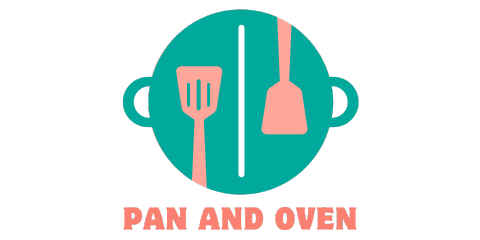
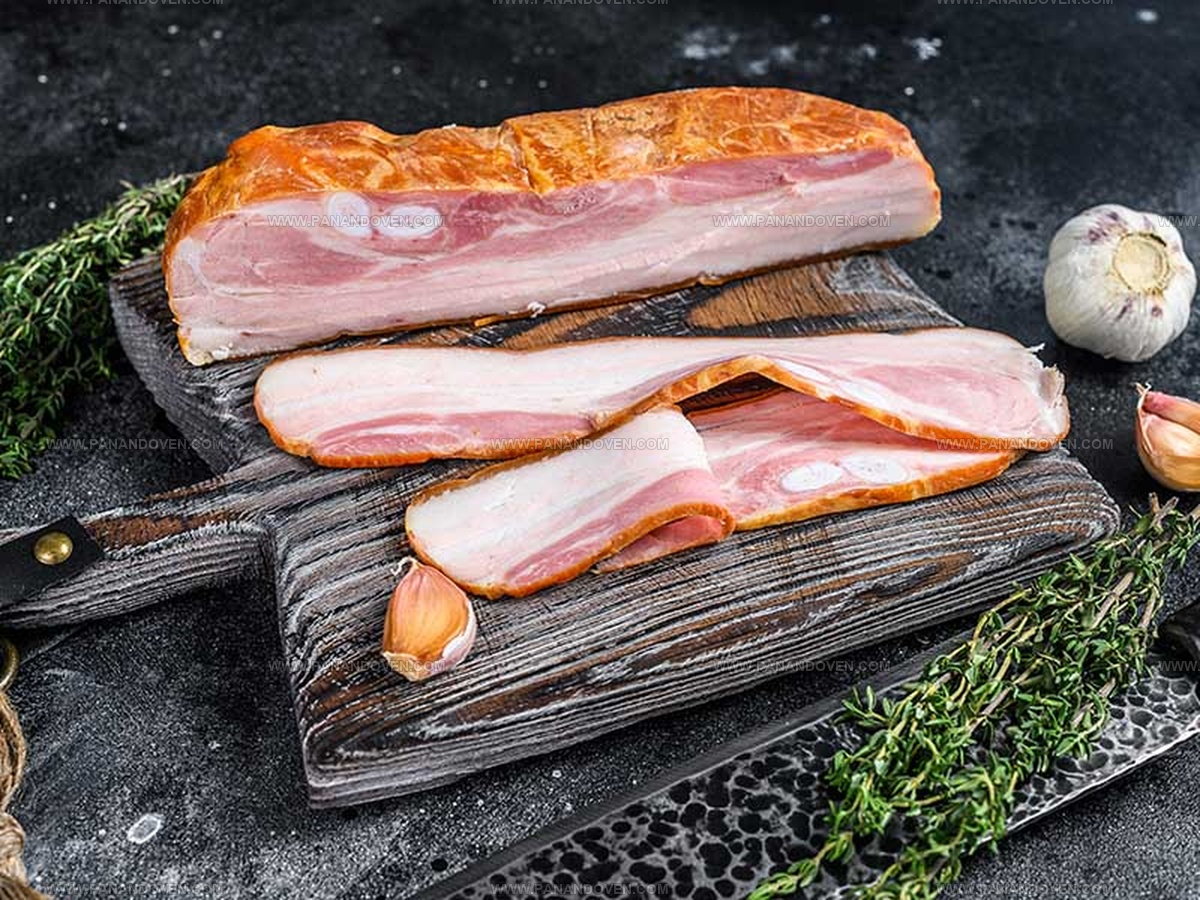
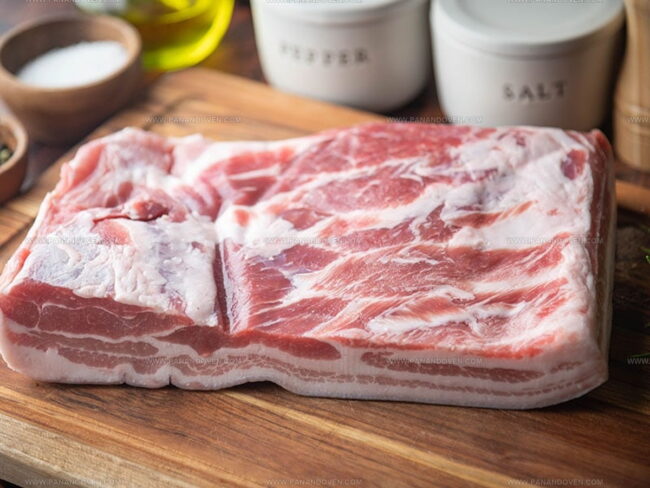
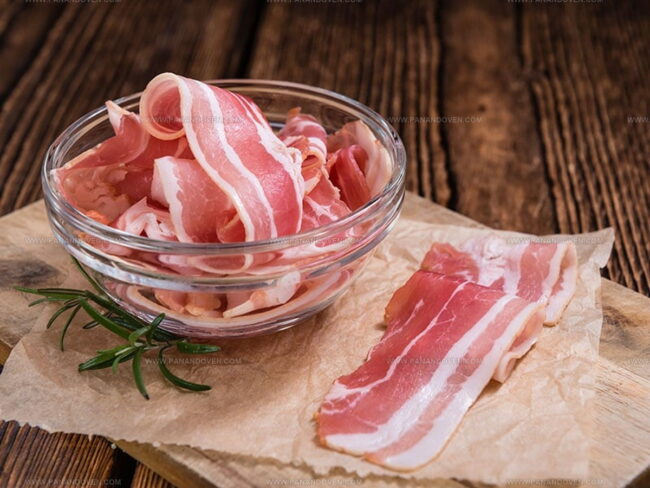

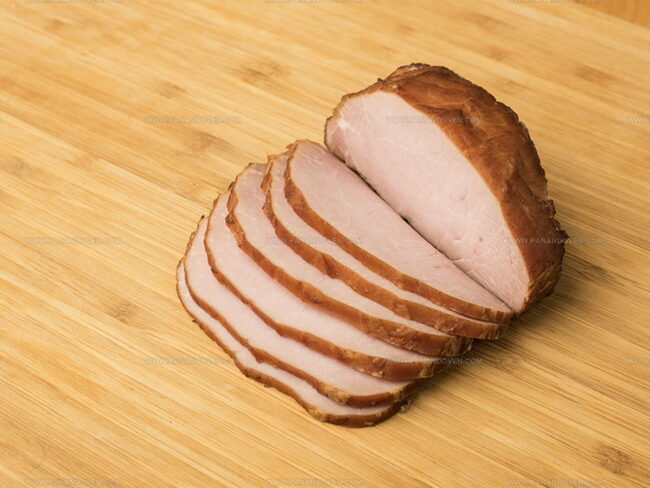
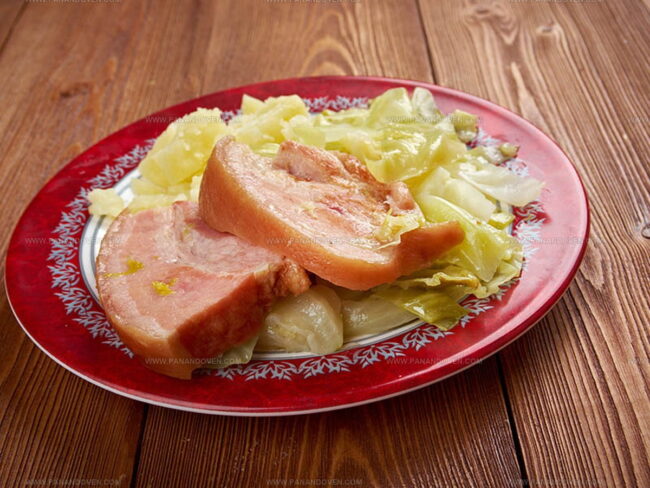
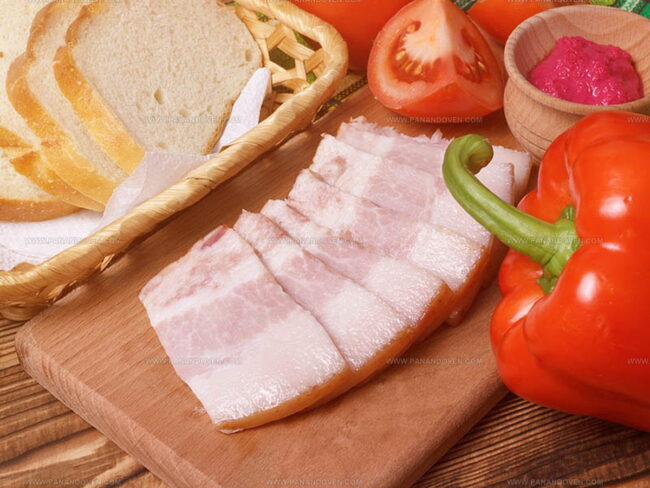
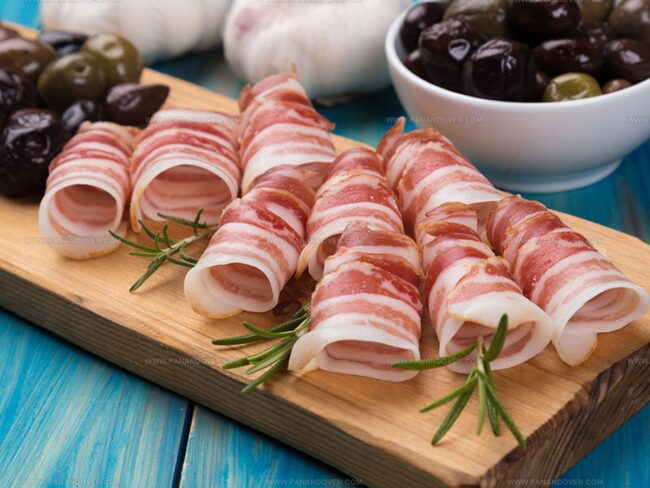
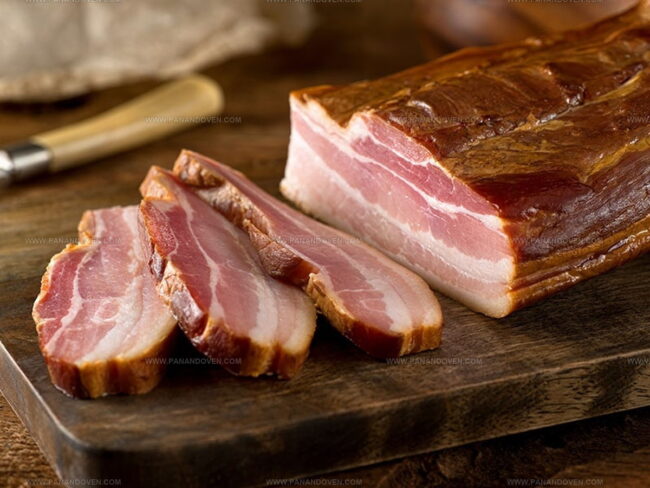
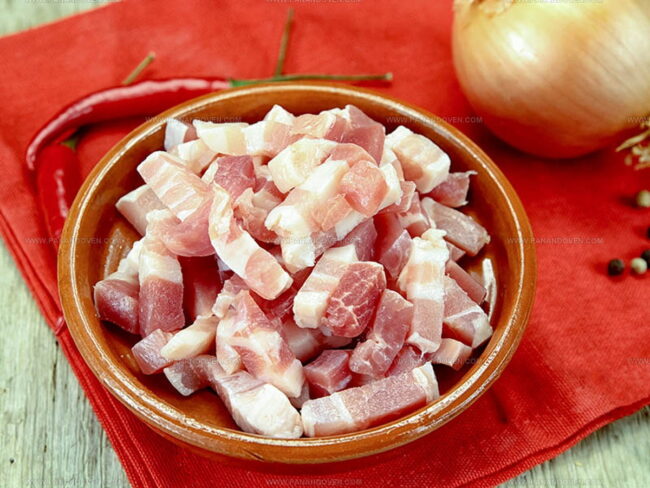
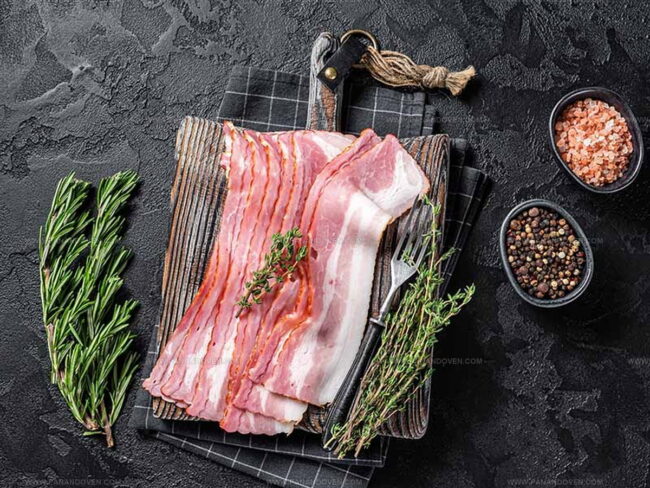
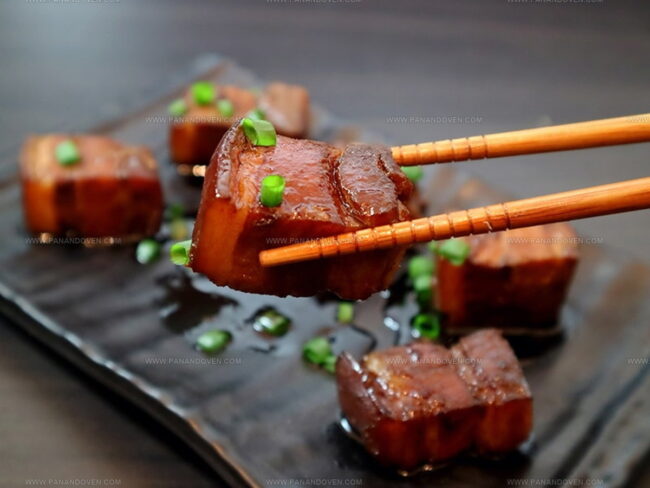
Marcus Reed
Founder & Food Content Creator
Expertise
Single-recipe development, Seasonal and local ingredient utilization, Food photography and styling, Culinary writing and content creation
Education
Culinary Arts Certificate, Blue Ridge Community and Technical College, WV
Focus: Fundamentals of culinary techniques, emphasizing hands-on experience in small-scale kitchen settings.
Marcus’s story begins in Asheville, where good food and family kitchens shaped his earliest memories. After hands-on culinary training and a lot of trial (and a little error), he realized that real cooking isn’t about perfection, it’s about connection.
At Pan and Oven, Marcus crafts recipes that are easy to follow, packed with flavor, and built for real kitchens.